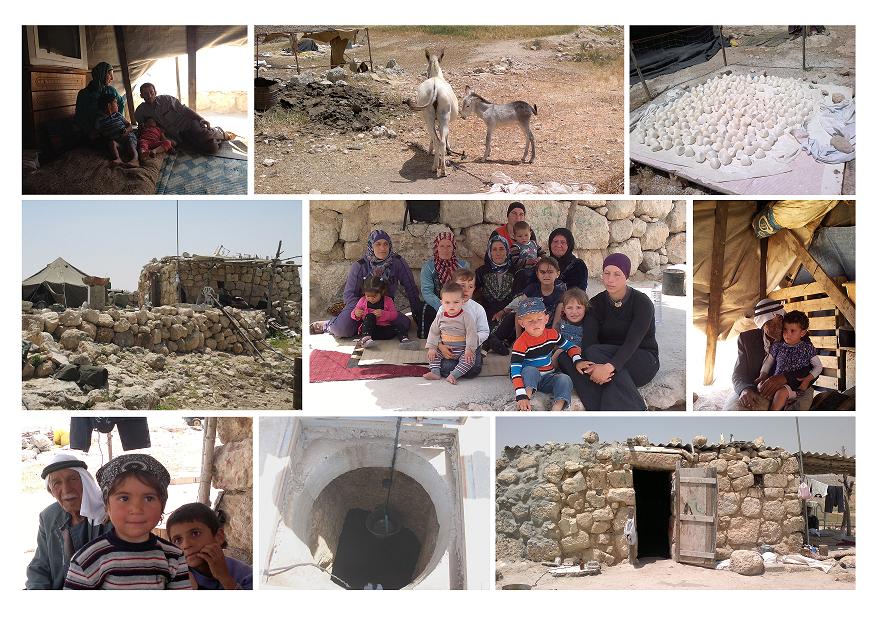 Residents of Zanuta at the Supreme Court
Residents of Zanuta at the Supreme CourtOn September 9, 2013, the Supreme Court will hear a petition filed by the Association for Civil Rights in Israel together with residents of the village of Khirbet Zanuta against the State’s plan to uproot the residents’ village, located in the South Hebron Hills, together with its 130 residents (27 families). In a previous hearing on this issue, the court ordered the state to suggest an alternative housing solution for the village residents in the case that permission was granted to go ahead with the demolition. In its formal response to this order, the State disregarded this request and reiterated its position that the village should be regarded as a random collection of illegally built structures on an archaeological site, and that it has no intention of promoting a planning solution for the village and its inhabitants.
In the petitioners’ full court filings, ACRI Attorney Maskit Bendel emphasized that the petition is not directed against the assortment of demolition orders, but against the destruction of an entire village, the uprooting of a community and the expulsion of its residents from their homes.
An expert opinion on the matter, prepared by Bimkom – Planners for Planning Rights, and attached to the court filings, suggested a planning outline that would allow residents to continue to live in their village whilst protecting the integrity of the archaeological site. An archaeological opinion by Dr. Avi Ofer, also provided to the court, details how houses in the village can actually assist in preserving the historical buildings around them. Both opinions, offered by experts in the field of planning and site preservation, strengthen the petitioners’ argument that the State’s plan to uproot the village due to the presence of an archaeological site is entirely arbitrary, as it has been in many other places before.
The extended court filings presented by the petitioners, provide evidence that the village has existed for many decades, long before it fell under Israeli sovereignty in 1967. In response to the State’s claim that the village residents are newly arrived, ACRI presented an aerial photograph taken in 1989 clearly showing the existing community with multiple residential and agricultural structures. An archaeological survey conducted in 1968 by the State itself similarly reinforces this fact.
Attorney Maskit Bendel: “in all of the State’s arguments, it has made clear that it sees the village as an illegal collection of buildings and nothing more. It has refused to see the village through the buildings, nor the human face of the residents through the demolition orders. The closed circle created by the state with regard to planning and building in the Occupied Territories does not allow residents of villages, or the Palestinian people generally, to build structures legally. We hope that the State’s position will change by the next hearing, and that it will stand by its obligation to the residents to abide by the court’s instructions.
The Justices hearing the case will be Deputy President Edna Naor, Justice Elyakim Rubinstein and Justice Uzi Vogelman.
Below: Photos from Khirbat Zanuta (by Yafit Gamilah Biso, Nira Shalev, and Marc Grey).
Click on images to view full size.
Related Materials








